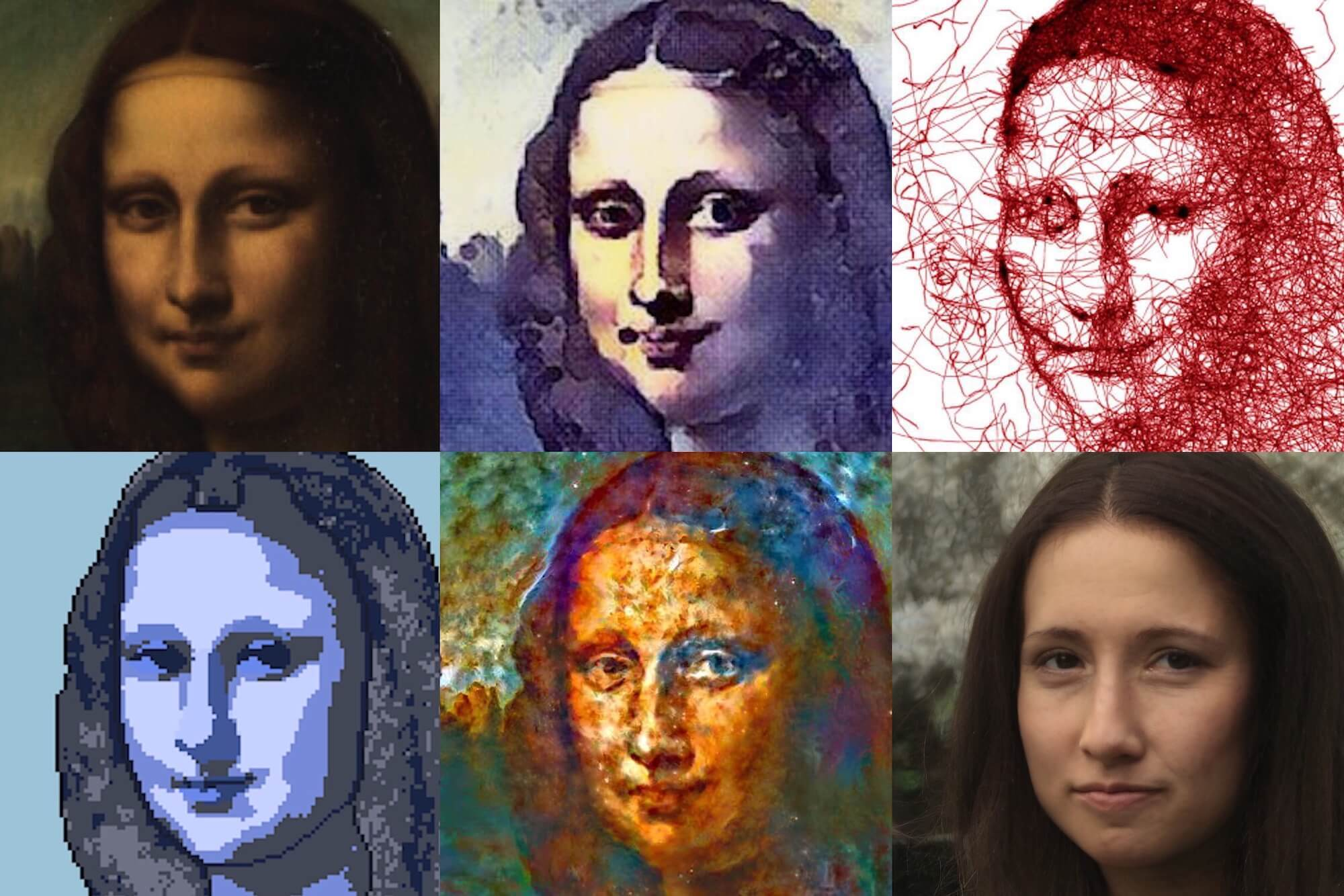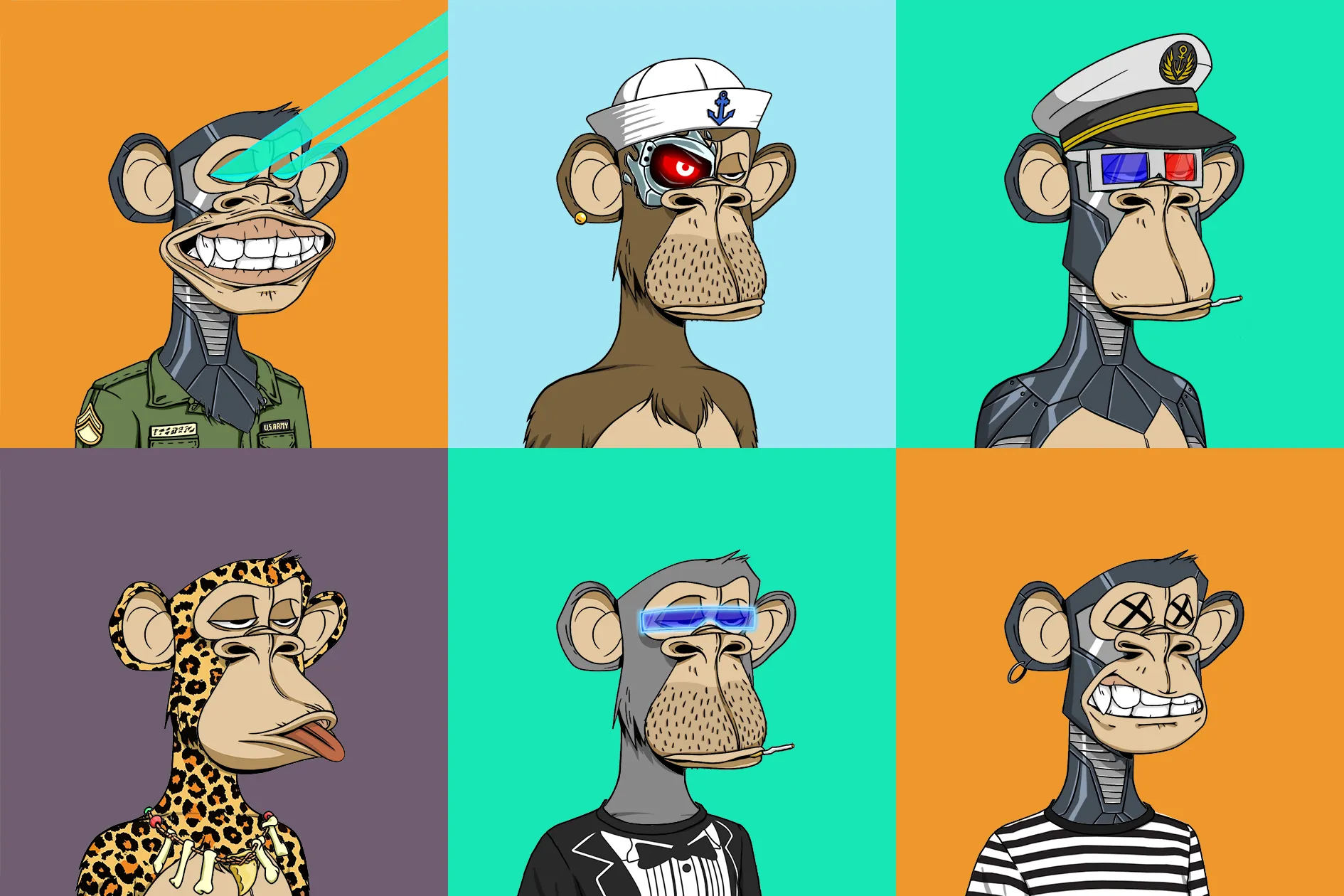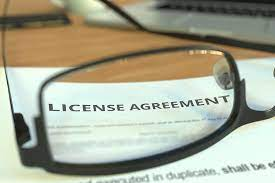Can You Sell AI Generated Art? Legalities and Top Tools

Can you sell AI-generated art? This question has been on the minds of many digital artists and marketers as artificial intelligence continues to revolutionize the creative industry. In this blog post, we will delve into the intricacies of selling AI-generated images while navigating copyright laws and ensuring compliance.
Also read: 7 Best AI Art Generator Software 2023
We’ll explore top tools for creating and selling AI-generated artwork, such as OpenAI, NightCafe Creator, and Midjourney. Furthermore, we’ll discuss how to monetize your creations through NFTs (Non-Fungible Tokens) by understanding their workings in conjunction with digital assets.
Lastly, we will examine Adobe Stock’s acceptance of generative A.I.-created art form illustrations along with licensing agreements and user rights associated with various AI generators. At the conclusion of this article, you’ll have a thorough comprehension of whether it is permissible to market artwork produced by Artificial Intelligence.
AI-Generated Art and Copyright Laws
Understanding the legalities surrounding selling AI-generated art is crucial for marketers and freelancers. In the U.S., selling AI-generated art is permissible as long as it doesn’t violate another artist’s copyright. Although AI-generated artworks cannot be copyrighted themselves, most popular AI generators allow commercial rights for users who create unique images with their software.
U.S. Copyright Office Rules Regarding AI-Generated Art
The U.S. Copyright Office has stated that works created by artificial intelligence are not eligible for copyright protection since they lack human authorship. This means that you can use these creations without worrying about violating any copyrights held by the AI itself.
Nevertheless, caution must be taken when selling artwork created by AI to ensure that it does not breach any copyright held by other creators.
Ensuring Compliance with Copyright Laws When Selling Your Creations
- Educate yourself: Learn about intellectual property law and how it applies to digital media so you can better understand what constitutes infringement.
- Create original content: Use AI tools responsibly and ethically by generating unique pieces rather than copying existing works or using recognizable elements from protected materials without permission.
- Credit sources appropriately: If incorporating third-party content into your own work (e.g., background music), make sure you have proper permissions in place before doing so, such as obtaining a license or attributing the source correctly according to its licensing terms.
Given the intricate details of copyright laws, it is essential to research and comprehend them prior to attempting to market AI-produced artwork. Fortunately, there are several tools available that can help creators stay compliant with these regulations while still allowing for commercial usage of their work.
Top Tools for Creating and Selling AI-Generated Art

Several tools are available that permit commercial use of generated images under certain conditions while adhering to copyright regulations. These include OpenAI, NightCafe Creator, Midjourney (for personal use only), Jasper Art, Dall-E 3, Stable Diffusion, and Simplified Art Generator.
OpenAI Platform Allows Users to Own All Rights Generated by Them
OpenAI is a popular platform for creating AI-generated art with its advanced technology. It allows users to own all the rights to ai generated works by them using the platform’s API. You can monetize your artwork without the fear of breaching any copyright or IP regulations.
NightCafe Creator Permits Commercial Usage Under Specific Conditions
NightCafe Creator is another excellent tool for generating unique artwork using artificial intelligence algorithms. The platform permits commercial usage of the images created through their service but requires users to follow specific guidelines outlined in their terms of service agreement. Be sure to read these carefully before selling your NightCafe-generated art pieces.
Midjourney Grants Permissions But Limited To Personal Use If Utilizing Free Service Tier
If you’re looking for an AI generator that offers more control over image generation parameters, consider trying out Midjourney. While it grants permissions for selling artworks created with their software, be aware that if you utilize their free service tier, the usage is limited to personal use only. To sell your creations commercially, you’ll need to upgrade to a paid plan.
Other notable AI art generators worth exploring include Jasper Art, Dall-E 3, Stable Diffusion, and Simplified Art Generator. Each of these tools has its unique features and capabilities that can help you create stunning AI-generated artwork for commercial purposes while staying compliant with copyright laws.
This article highlights the use of open source tools as a means to generate and earn income from AI-generated artwork. By leveraging NFTs, creators can make sure their artwork is properly protected while still making money from it.
Key Takeaway:
The article discusses various AI art generators that permit commercial use of generated images while adhering to copyright regulations. OpenAI allows users to own all the rights generated by them, NightCafe Creator permits commercial usage under specific conditions, and Midjourney grants permissions to ai generated image but is limited to personal use if utilizing the free service tier.
Monetizing Your Creations through NFTs

Combining Non-Fungible Tokens (NFTs) with your AI-generated art can further monetize your creations while ensuring compliance with copyright laws. NFTs represent ownership over unique digital items like artwork or collectibles stored on blockchain technology platforms such as Ethereum.
How NFTs Work in Conjunction with Digital Artwork
NFTs are a revolutionary way to sell and trade digital assets, including AI-generated art. Each token is unique and indivisible, representing a specific piece of content. When you create an NFT for your AI-generated artwork, it becomes a tradable asset that buyers can purchase using cryptocurrency. The blockchain ensures the authenticity and provenance of the art by recording every transaction related to the piece.
To create an NFT for your AI-generated art, you will need to mint it on a platform that supports this process. Minting refers to creating a new token on the blockchain associated with your digital asset. Once minted, you can list it for sale on various NFT marketplaces, where potential buyers can bid or make offers using cryptocurrencies like Ether (ETH).
Platforms Supporting the Sale of NFT-Based Digital Assets
- OpenSea is a popular platform for obtaining and trading crypto-collectibles as well as other rare digital products.
- Rarible: Rarible is a decentralized platform that allows artists and creators to mint, buy, and sell unique digital assets.
- SuperRare: SuperRare is a high-end marketplace for single-edition digital art. It focuses on quality over quantity by carefully curating the artworks available on its platform.
- Foundation: Foundation aims to bridge the gap between traditional art markets and blockchain technology by offering an accessible platform for both artists and collectors.
In addition to these platforms, there are also specialized marketplaces like Nifty Gateway, which focus on limited edition drops from well-known artists or celebrities. As you explore various options for selling your AI-generated artwork as NFTs, be sure to research each platform’s fees, audience demographics, and promotional opportunities in order to maximize your potential revenue.
By utilizing NFTs, creators have a unique opportunity to monetize their digital artwork and make it available for purchase. With the introduction of Adobe Stock’s acceptance of generative A.I.-created illustrations, artists can now explore new ways to showcase their work in an even more expansive marketplace and art world.
Key Takeaway:
You can monetize your AI-generated art by combining it with Non-Fungible Tokens (NFTs) and selling them on blockchain technology platforms such as OpenSea, Rarible, SuperRare, or Foundation. NFTs ensure compliance with copyright laws and represent ownership over unique digital items like artwork or collectibles. Minting your art on a platform that supports this creation process will create a new token on the blockchain associated with your digital asset which becomes a tradable asset that buyers can purchase using cryptocurrency.
Adobe Stock Acceptance of Generative A.I.-Created Illustrations

In recent years, Adobe Stock has expanded its library to include high-quality generative A.I.-created illustrations. As a marketer or freelancer seeking to offer AI-generated artwork, it is essential to be familiar with the rules and regulations for submitting your work on Adobe Stock.
Requirements and Guidelines for Submitting AI-Generated Art to Adobe Stock
To submit your AI-generated artwork on Adobe Stock, you must ensure that it meets their quality standards. Additionally, all submissions should be clearly labeled as “Generative A.I.” or “Illustration” in the metadata fields provided during the submission process. This helps potential buyers understand the nature of your work and ensures transparency.
- Quality: Your submitted images should be visually appealing, well-composed, and free from technical issues such as noise or artifacts.
- Licensing: Ensure that you have obtained any necessary permissions before using copyrighted material in your creations. If required by Adobe Stock, provide a property release form for recognizable subjects or properties within your artwork.
- No Famous People: Do not generate images featuring famous people without proper permission; doing so may result in copyright infringement claims against you.
The Importance of Obtaining Permissions Before Using Copyrighted Material
Selling AI-generated art requires careful consideration when incorporating copyrighted materials into your creations. Infringing upon another artist’s rights can lead to legal disputes and damage both parties’ reputations. To avoid these pitfalls:
- Contact copyright holders directly if possible;
- Negotiate licensing agreements with them;
- And always follow the guidelines set forth by your chosen AI generator and platform, such as Adobe Stock.
By adhering to these best practices, you can create unique and engaging AI-generated art while respecting intellectual property rights. This approach to art creation will not only protect you from potential legal issues but also contribute positively to the growing community of artists working with generative A.I. technologies.
Adobe Stock’s acceptance of generative A.I.-created illustrations is a great step forward for the creative industry, as it allows artists to monetize their work and expand their audience reach. By understanding licensing agreements and user rights associated with different AI generators, creators can ensure they are using artwork legally while taking advantage of royalty-free usage options such as Creative Commons Zero (CC0) license.
Key Takeaway:
Adobe Stock now accepts high-quality generative A.I.-created illustrations, but it’s important to understand their requirements and guidelines for submitting your work. To sell AI-generated art, ensure that your images are visually appealing, free from technical issues and do not infringe upon another artist’s rights by obtaining necessary permissions before using copyrighted material.
Licensing Agreements and User Rights

When selling AI-generated art, it is essential to research the licensing agreements of each generator before using them in your projects. You must understand any restrictions on commercial use or attribution requirements imposed by these platforms to avoid unintentionally violating intellectual property laws.
Examples of User Rights with Different AI Generators
Different AI generators have varying terms of service and licensing agreements that dictate how you can use the generated content. For instance, OpenAI allows users to own all rights to ai generated content made by them but may require a subscription for access to certain features. On the other hand, NightCafe Creator permits commercial usage under specific conditions such as crediting NightCafe Studio when sharing or publishing images online.
- OpenAI: Users retain ownership of their creations but must adhere to OpenAI’s terms of service.
- NightCafe Creator: Commercial usage allowed with proper credit given; check their website for additional guidelines.
- Midjourney (for personal use only): Free tier grants permissions limited to personal use; upgrading may provide more extensive commercial rights.
Creative Commons Zero (CC0) License Allowing Royalty-Free Usage
In some cases, AI-generated art might be available under a Creative Commons Zero (“CC0″) license, which means that creators waive all copyright and related rights, allowing anyone to use the content for any purpose without restrictions. However, it is essential to verify that the AI generator you are using allows CC0 licensing before selling or distributing your creations.
For more information on Creative Commons licenses and how they apply to AI-generated art, visit the Creative Commons website.
FAQs in Relation to Can You Sell Ai Generated Art?
Can you legally sell AI-generated art?
Yes, you can legally sell AI-generated art as long as it complies with copyright laws and does not infringe on any existing intellectual property. It is essential to ensure that the AI tool used allows commercial usage of its generated content and obtain necessary permissions if required. U.S. Copyright Office rules may provide guidance in this regard.
Can I use AI-generated art for profit?
Yes, using AI-generated art for profit is possible if the artwork adheres to copyright laws and respects intellectual property rights. Make sure to choose an AI platform that permits commercial usage under specific conditions or offers a licensing agreement suitable for your intended purpose.
Can I sell AI-generated art of celebrities?
Selling AI-generated art of celebrities could be risky due to potential violations of their right of publicity or privacy rights. It’s crucial to research applicable laws in your jurisdiction before selling such artworks, as legal consequences might arise from unauthorized use of someone’s likeness.
Can you be sued for selling AI-art?
You can potentially be sued for selling AI-art if it violates copyright laws, infringes on intellectual property rights, or breaches privacy and publicity rights. To minimize risks, ensure compliance with relevant regulations by obtaining appropriate licenses and permissions before using copyrighted images and material in your creations.
Conclusion
In conclusion, AI-generated art created here can be sold as long as it complies with copyright laws and licensing agreements. The U.S. Copyright Office has specific rules regarding ownership of AI-generated artwork, and there are various tools available for creating and selling such art while ensuring compliance.
NFTs have also emerged as a popular way to monetize digital artwork, but it’s important to obtain permissions before using copyrighted material. Licensing agreements and user rights vary depending on the AI generator used.






